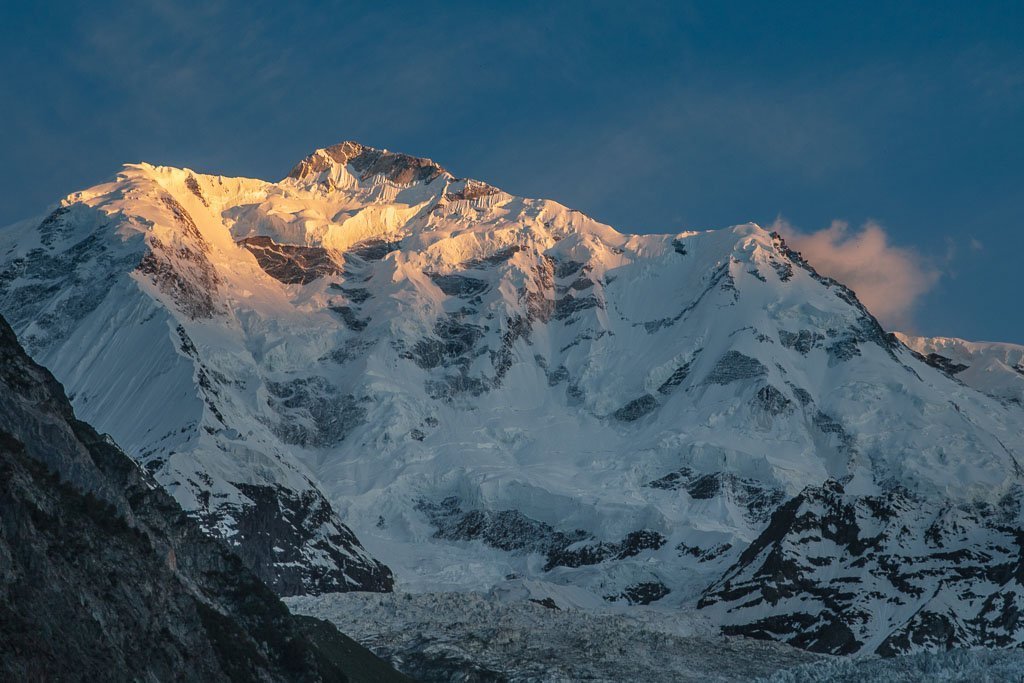
Gilgit-Baltistan Travel Guide
Updated April 2024, The Gilgit-Baltistan Travel Guide was originally written in August 2018
Gilgit-Baltistan: Where the Karakorams and Hindu Kush gnarl together forming some of the world’s highest mountains. Home to Khowar, Shina, Wakhi, and Balti speakers (just to name a few!), as well as those using Burushaski- a language related to no other. Where hospitality knows no bounds and an adventure of a lifetime is at nearly every twist and turn.
Learn how to travel in Pakistan’s stunning Northern Areas in this Gilgit Baltistan Travel Guide.
Need visuals? Head over to my post: Gilgit-Baltistan in photos
Need Travel Insurance and Evacuation Services for Pakistan?
Start shopping for travel insurance plans over at IATI Insurance. Readers of the Adventures of Nicole get a 5% discount off your plan.
The Adventures of Nicole partners with Global Rescue to offer the world’s leading medical evacuation and security advisory services. To travel with peace of mind, shop evacuation coverage at Global Rescue.
- Money
- Language
- Religion
- What To Wear In Gilgit-Baltistan
- Best Time To Visit Gilgit-Baltistan
- Getting Around
- How To Get To Gilgit-Baltistan
- Visas
- Food
- Accommodation
- What To See & Do In Gilgit-Baltistan
- Where To Go
- Trekking & Mountaineering
- Festivals
- Tour Operators & Guides
- Gilgit-Baltistan Travel Budget
- Packing List
- Online Resources & Handy Apps
- Internet & Mobile
- Health & Safety
- Other Important Notes

Money
Pakistan’s currency is the Pakistani Rupee (PKR or Rs). As of April 2024, the current exchange rate is:
- $1 USD = 280 PKR
- €1 = 305 PKR
You can exchange to PKR in Gilgit, Karimabad as well as Sost, and there are ATMs in Gilgit city. For exchanging to and from RMB for those coming from and heading to China the best place to exchange is Sost. USD is generally the easiest currency to exchange.
Tipping– Tipping isn’t common practice in Gilgit-Baltistan as is the case in most of Pakistan. Those working in the tourism industry may expect a tip, so you can tip for good service.
People throughout the region are quite warm and welcoming and will invite you to stay in their homes and even offer you meals. You can try to leave a small amount of money for them as a thank-you, although it is common for them to refuse (I typically try to hide the money somewhere, like under a cushion).
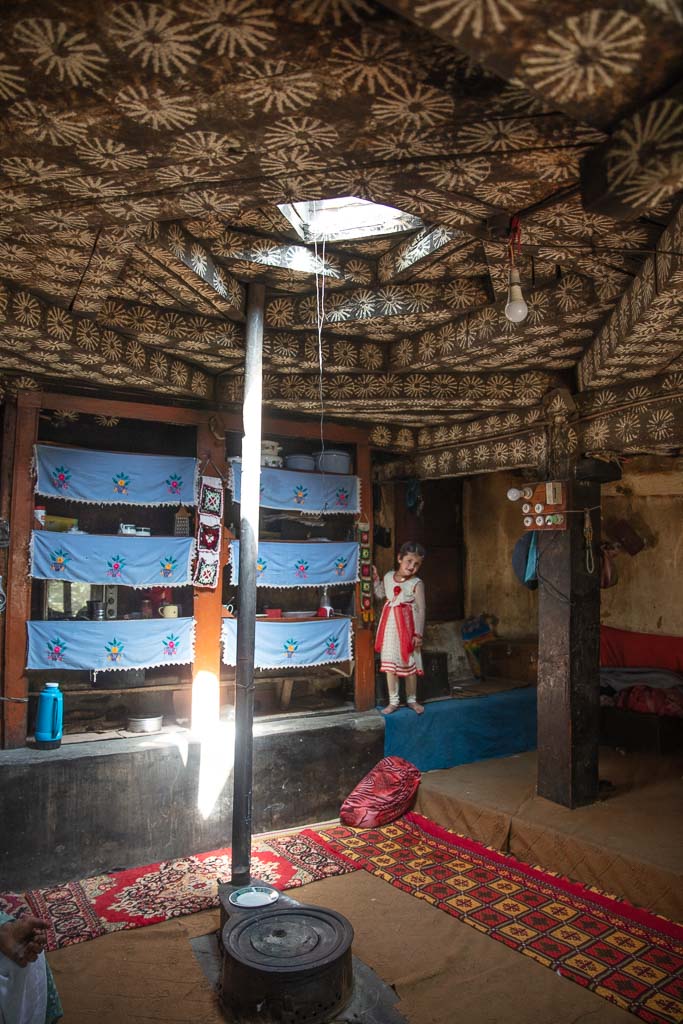
Language
Pakistan is home to over 60 languages, with Urdu and English being the official languages of the country. Gilgit-Baltistan is a clash of cultures and languages. Languages spoken in the region include Shina, Balti, Burushaski, Khowar, Wakhi, Domaki, Gujari, Pashto, Ladakhi, Zangskari, and Purgi.
Religion
The population of Gilgit-Baltistan are Muslim with the majority being of the Shia Sect, although the region is fairly diverse. You will find practitioners of both Sunni and Shia sects as well as Ismailism.
What To Wear In Gilgit-Baltistan
I 100% recommend purchasing a shalwar kameez when you arrive in Gilgit-Baltistan or Pakistan in general. Why wear something uncomfortable when you can don a shalwar? You can pick up a ready made shalwar for 1,500-2,500 PKR in Gilgit, but if you have the time I recommend having one tailored.
Okay, so what if you don’t want to wear the shalwar…
For The Boys: Trousers and long sleeve tops, but t-shirts are acceptable.
For The Girls: It’s best to dress conservatively because it’s the norm in Gilgit-Baltistan Long sleeved tunics that go mid-thigh in length or longer are best worn with trousers. Always have a scarf with you although you won’t be expected to wear it covering your hair most of the time.
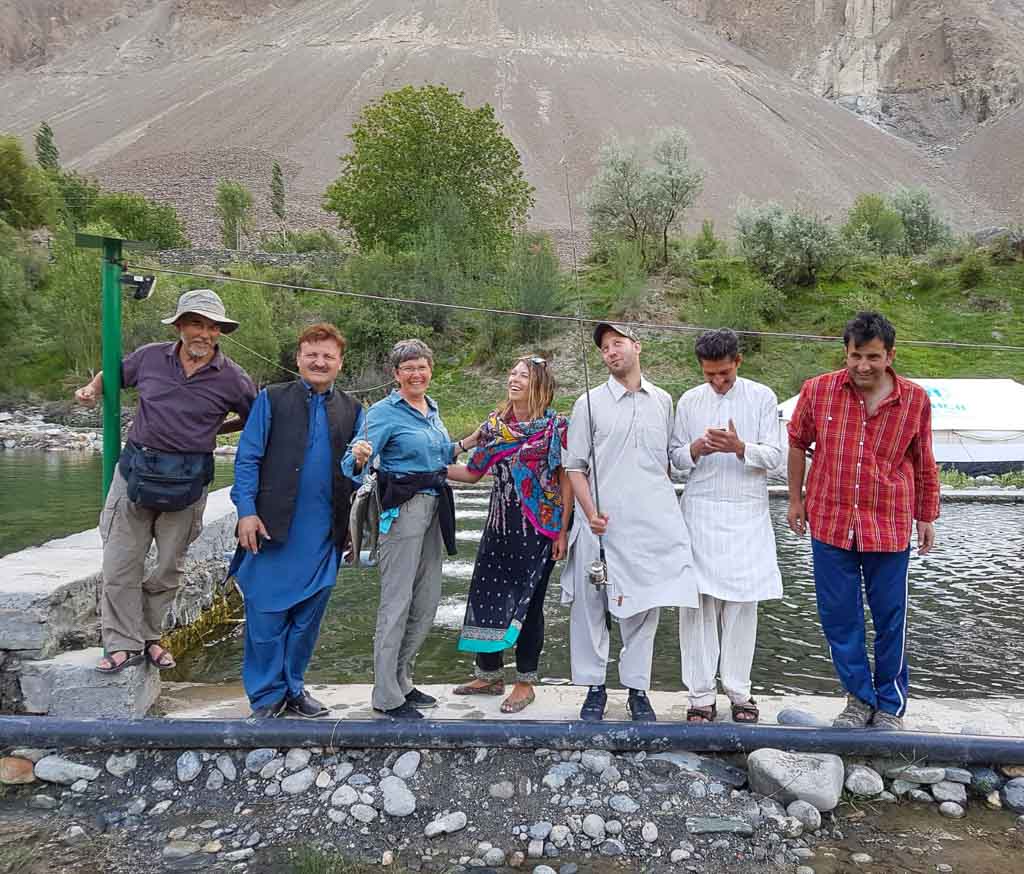
Best Time To Visit Gilgit-Baltistan
For trekking and camping, the best time to visit is June-August, however, August can get quite crowded and a bit more expensive with Pakistani tourists visiting as well from all over the country. October & November are a great time to visit with the beautiful fall colors underway.
Getting Around
Most traveling in Gilgit-Baltistan will be done by either bus or jeep hire. NATCO (Northern Area Transport Corporation) is the most well-known transport company is in the area, but there are others. Transport companies, as well as tour operators in the region, can arrange jeep hire as well.
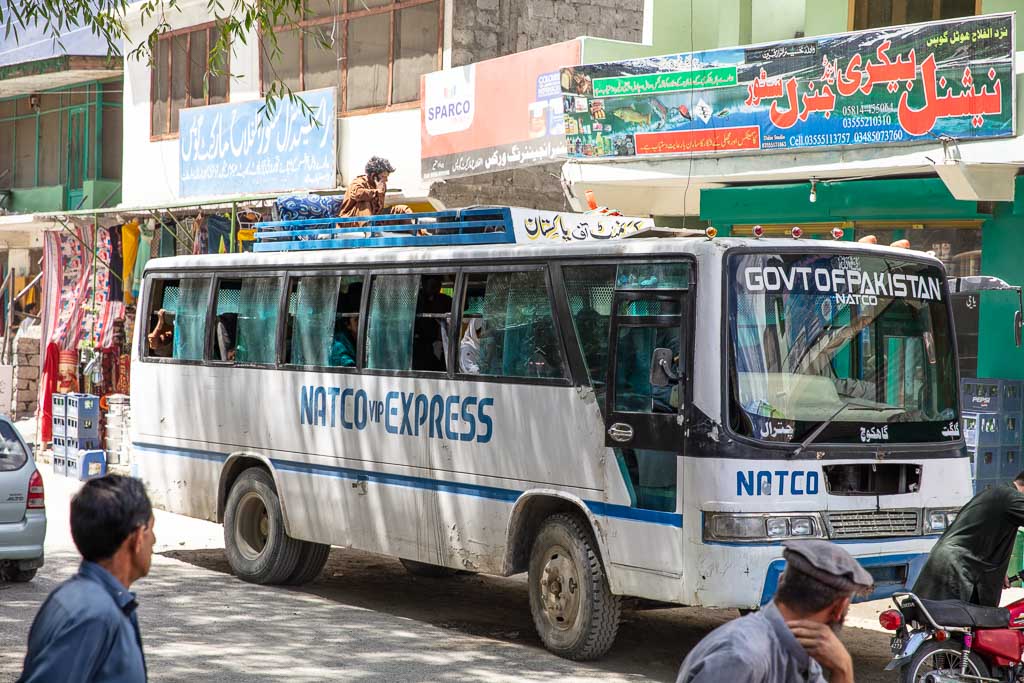
How To Get To Gilgit-Baltistan
To reach Gilgit-Baltistan you can do so by air and by road.
By Road
The Karakoram Highway (Aka: KKH or N-35) connects Gilgit-Baltistan with China to the north and to Islamabad in the south.
For those coming from Islamabad/Rawalpindi by bus, the journey to Gilgit will take roughly 19 hours and costs between 1,600 and 2,300 PKR.
For those coming down the KKH from China expect the journey (once the bus actually leaves) to take about 6 hours from Tashkurgan to the Pakistani border post at Sost. You can book buses either with NATCO or Hunza Xinjiang Trading & Tourism from the bus station in Tashkurgan for 225 RMB ($33 USD).
You will need to clear Chinese customs and immigration in Tashkurgan before boarding your bus (which will leave from the Khunjerab Port where you clear customs/immigration). From there it’s about 3 hours to the actual border crossing fence to Pakistan. From the fence expect about 3 hours of travel time to arrive in Sost.
From Sost you can find buses bound for the Hunza Valley, Gilgit, Skardu, Chilas, Astore, and beyond.
Read: Everything you need to know to cross the border at Khunjerab Pass
One thing to note is that you will have to get out and pay the Khunjerab National Park fee on the way to Sost. You can pay the fee in Pakistani Rupee (800 PKR), Chinese Yuan (50 RMB), or US Dollars ($8 USD).
By Air
Pakistan International Airlines (PIA) offers daily flights to Gilgit from Islamabad, taking about 50 minutes. It’s known to be one of the most scenic flights in the world but is prone to delays and cancellations due to weather. Prices are 12,110 PKR each way (roughly $100 USD).
PIA also offers a daily flight to Skardu from Islamabad taking 1 hour. This flight is scenic as well and suffers weather delays much like the Gilgit flight. Prices are 15,420 PKR each way (about $125 USD).
Visas
Many visitors are now eligible for an e-visa to visit Pakistan. You can apply for yours here.
I will mention that in 2019 I applied and paid for a one-year multi-entry in my Italian passport and only received a single entry e-visa (I enquired about the mistake but it has never been resolved), so I’ve paid $52 for a single entry visa, rather than the $35 fee that you would normally pay for a single entry- so consider yourself warned.

In 2018 I still had to apply the old-fashioned way, through a consulate (this was on my US passport). I can say from personal experience that obtaining a tourist visa from the Pakistani Consulate in Los Angeles was simple, fast, and straightforward. The only document I was asked for that was not mentioned in the instructions on their website was a letter from my employer stating that my travel in Pakistan was not work-related and that I would be returning to my job after my trip.
Note that the visa application, whether applying online or at the consulate is extremely long and full of plenty of questions that I think are pointless (like seriously? I have to list every place I’ve visited in the last 5 years?!!?)
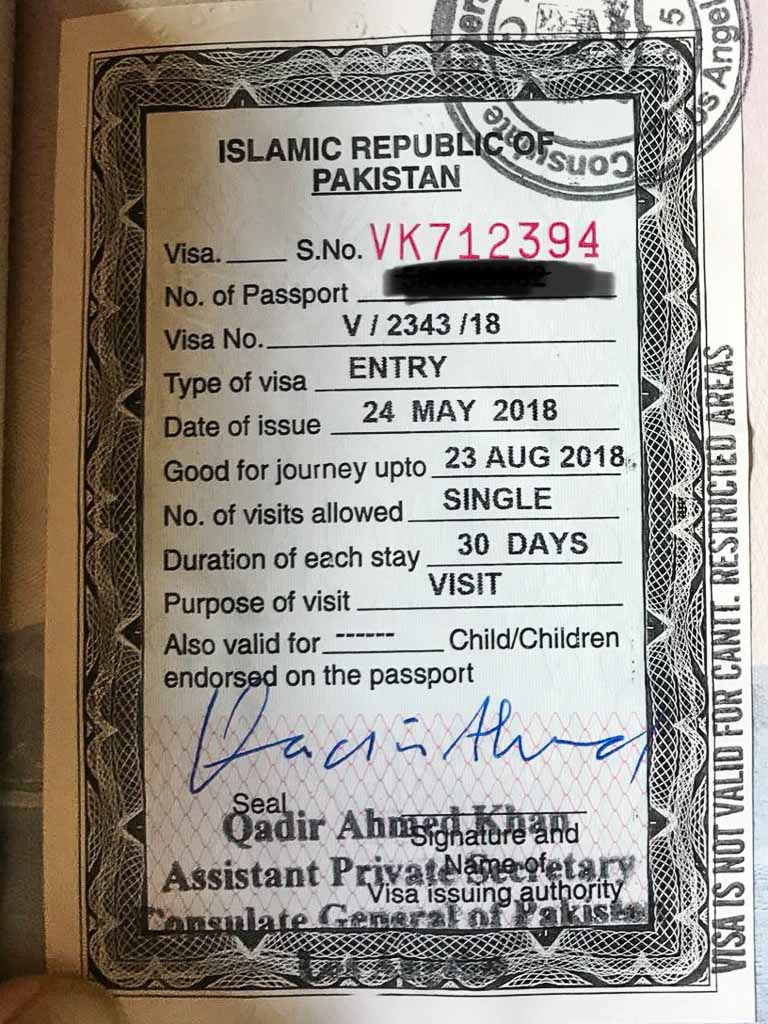
Permits & Special Permissions
You may have read in Pakistan you may need special permissions to visit certain areas and about needing a NOC (no objection certificate) to visit certain places. Most places that tourists go to in Gilgit-Baltistan do not need permits or NOC at the moment. Just note that anything in regards to bureaucracy in Pakistan could change in a second without any notice.
Good places to look up conversations on current info or ask questions are The Karakoram Club and Backpacking Pakistan on Facebook. In 2019 there were a lot of talks of certain areas of Pakistan not requiring NOC to visit, but some tourists have been asked for them.
Food
Gilgit-Baltistan cuisine shares a lot in common with Chitrali cuisine in neighboring Khyber-Pakktunkhwa. Of course you will find pilafs, daal and other dishes common throughout Pakistan. Here are a few local dishes you’ll likely find in Gilgit-Baltistan:
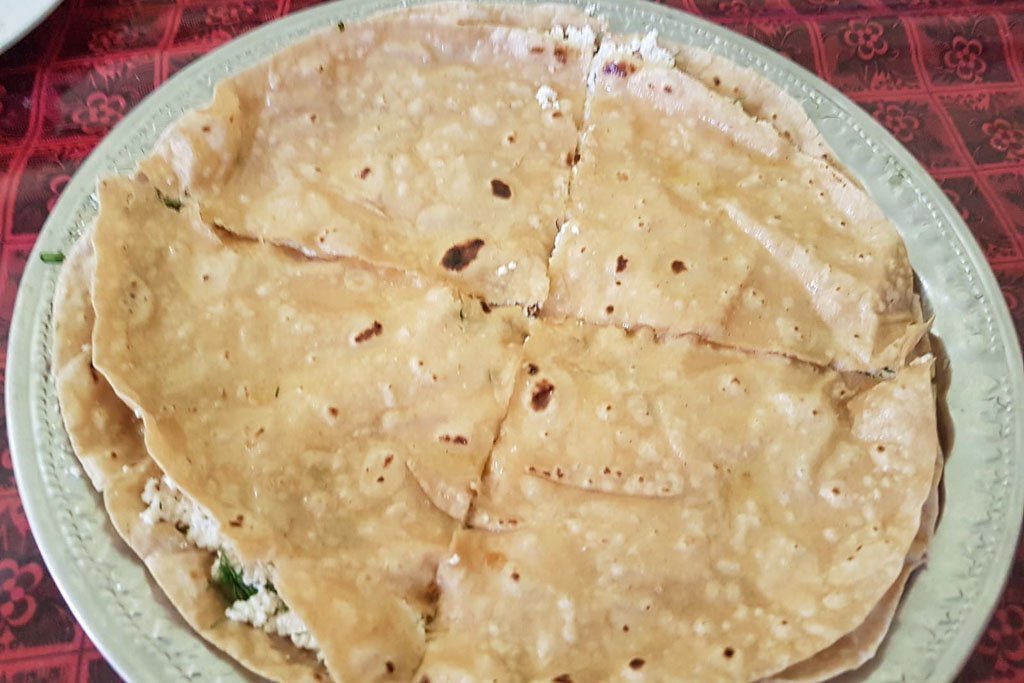
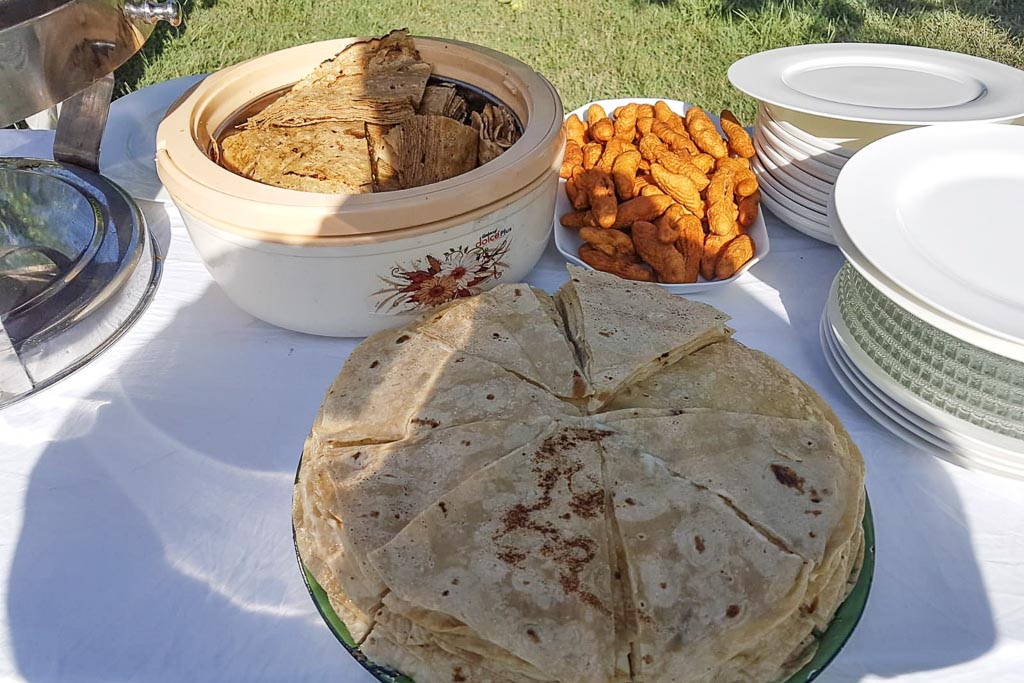
Gholmandi: A filling of locally made cheese, coriander, and chives between two buttery chapatis. This is my absolute favorite.
Chapshuru: Meat, onion, chili, tomatoes, and coriander inside a thin dough. It looks similar to a calzone.
Shisar: A fried pastry-like snack made of wheat flour mixed with egg. Similar to fry bread or langos.
Rishoki: Like a pancake or crepe made of egg and wheat flour, dipped in butter. Can be savory or sweet.
Guli: Flatbread of wheat flour covered in heaps of butter.
Mantu: Steamed dumplings usually filled with meat, onion, garlic, and peppers.
Local Fruits: You can buy fresh local fruits (during the season of course) from people on the side of the road. Make sure and try the mulberries, apricots, cherries, plums, and grapes when in season.
Chai: Chai accompanies every meal, and also be ready for plenty of chai stops in your travels as well.

Accommodation
For those wanting to stay on a tighter budget, it’s recommended to try to stay at smaller hotels, guesthouses, and inns in Gilgit-Baltistan. There are guesthouses and hotels available in Gilgit, Gulmit, Hunza, Karimabad, Fairy Meadows, Skardu, Passu, Astore, and more. Search guesthouses and hotels on booking.
What To See & Do In Gilgit-Baltistan
For those that love dramatic mountains, turquoise glacial lakes, fascinating culture and great trekking Gilgit-Baltistan is a true paradise. There are too many stunning places to mention to check out here for this one blog post! Here are a few of the most common draws for those who visit the region.
K2 Basecamp, Baltoro & Concordia Glacier– The trek that takes you to the basecamp of the world’s second-highest peak. Usually an 18-19 day trek roundtrip.
Passu Cones– The Passu Cones can be seen as you traverse the Karakoram Highway in the Upper Hunza Valley near the village and glacier of the same name.
Hussaini Bridge– Known as the most dangerous bridge in the world. This rickety suspension bridge crosses the Hunza River with views of the Passu Cones in the distance.
Attabad Lake– This massive glacial lake was only formed in 2010 by a landslide that blocked the flow of the Hunza River resulting in this turquoise lake. The lake destroyed a section of the Karakoram Highway, forcing vehicular traffic to use barges to traverse the damaged 24 kilometer stretch. In 2015 the KKH was reopened through this section after 3 years of work and several tunnels and bridges. Attabad lake is 21 kilometers in length.
Baltit & Altit Forts– These 700 year old and 1,000 year old (respectively) forts perched in the Hunza Valley were once the homes of the Mir (king) of Hunza. They have sweeping views of the peaks and glaciers nearby.
Trekking– There are a dizzying amount of trekking and mountaineering options in Gilgit-Baltistan that will keep everyone happy from beginner to hardcore mountaineer.
Fishing– Until I stepped foot in Northern Pakistan I never knew that trout fishing was a big deal here.
Cycling– Many come to Gilgit-Baltistan to cycle the Karakoram Highway between Islamabad and Kashgar, China.
Where To Go
Gilgit-Baltistan is one of the most beautiful parts of Pakistan known for its massive mountain peaks. If you hate stunning mountain sceneries, sparkling lakes, welcoming people, and great food you probably should have stopped reading this travel guide a long time ago.
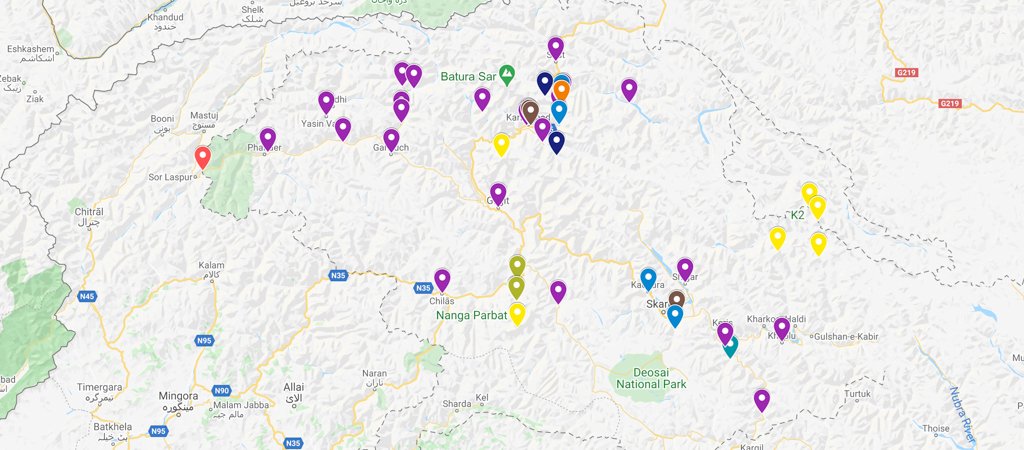
Gilgit
Gilgit City: The central travel hub for Gilgit-Baltistan and largest town along the Pakistani KKH. The main reasons to come to Gilgit is to exchange or get money out of an ATM, stock up on supplies/do some shopping, or spend a night between adventures. Gilgit City is accessible by road and plane.
The KKH connects the city with Xinjiang Province and China all the way south to Islamabad. Daily flights connect Gilgit to Islamabad.
Sost: Border town along the KKH in the Upper Hunza (Gojal) Valley. If arriving from China, Sost will be your first stop. Sost is the customs and immigration point for those coming from or heading to China.
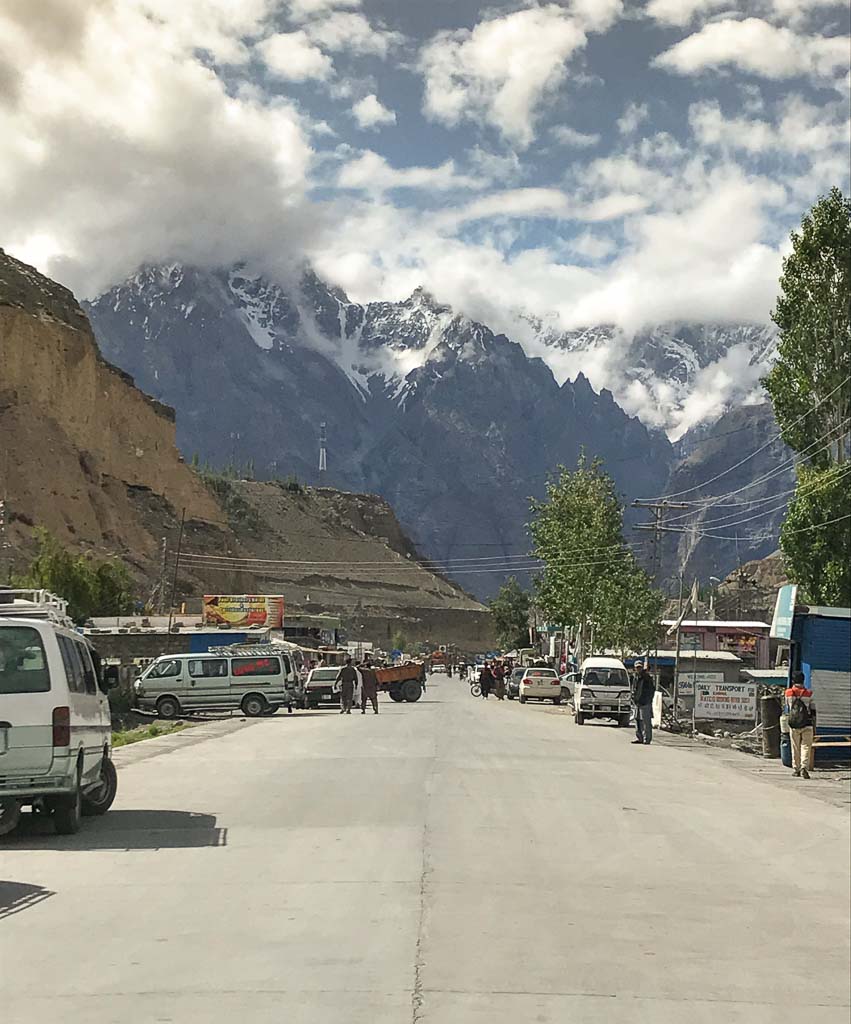
Shimshal: Village in the north of Gilgit inhabited by Wakhi people. Several multi-day treks can be done from here including the most well-known in the area to Shimshal Pass. Note that most trekking in the Shimshal area requires prior permission, contact a local tour agency to arrange them.
Hunza & Nagar Valleys: Hunza and Nagar were formerly princely states until 1974. The Hunza Valley is a big draw for tourists to Gilgit-Baltistan.
Nagar Valley is located just south of Hunza Valley as you make your way down the KKH. From the Nagar Valley, you will have amazing views of Rakaposhi- the 27th tallest mountain in the world from the highway.
A few of the places to visit in the valley include:
- Passu Cones & Glacier
- Hussaini Bridge
- Baltit Fort & Karimabad
- Attabad Lake
- Hopar
- Barpu Glacier
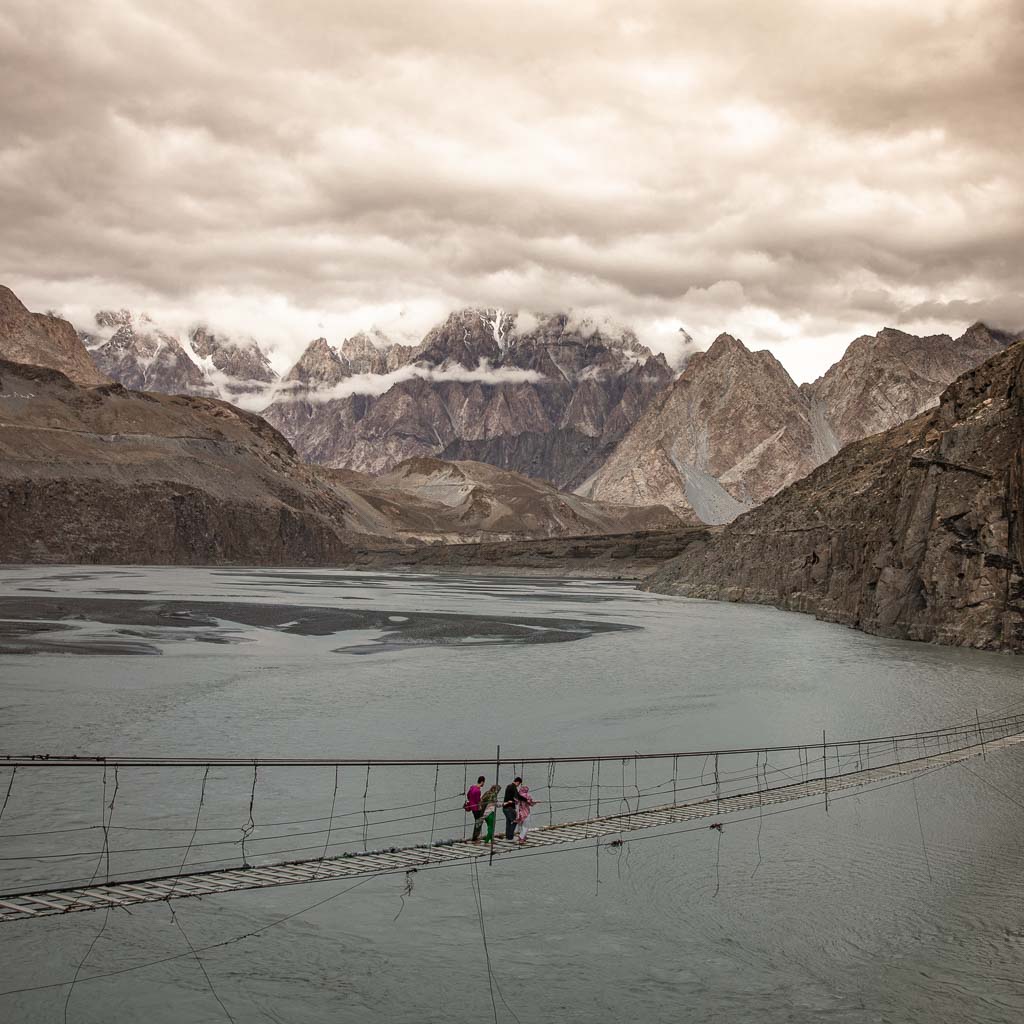


Ghizer
Ishkoman Valley: Home to 20 villages that sit along the Ishkoman River at the bottom of the valley that lies between the Hindu Kush to the west and Karakorams to the east. There are several treks that can be done from Ishkoman Valley including a trek up Chillinji Pass to join the Chipursan Valley, and eventually back to the KKH near Sost, a trek connecting Imit to Darkot in Yasin Valley as well as another connecting Chatorkhand with Yasin Valley, and even a trek up the Karumbar Pass taking you to Karumbar Lake near the border with the Wakhan Corridor of Afghanistan. Another trek that can be done from Chatorkhand and Pakora up to Pakora Pass to reach either Nagar or Chalt.
Trekking to Asumber Pass between Asumber Village in Ishkoman Valley and Sandhi Yasin in Yasin Valley is another hike connecting to the two valleys. Another scenic hiking option is to hike from Gotulti in the upper Ishkoman Valley to Attar Lakes, up over Attar Pass to reach Darkhot in the upper Yasin Valley. Ishkoman Valley is accessible by road from the town of Gakhuch.
Guesthouses are available in Ishkoman Valley including the newly opened Royal Guest House Birgal.

Yasin Valley: Just west of the Ishkoman Valley lies Yasin. Yasin has been historically important because it allowed access to Broghil Pass into Afghanistan’s Wakhan Corridor and to Chitral in Pakistan’s Khyber-Pakhtunkhwa Province. Yasin is reachable by road from the town of Gupis.
There are several treks that connect Ishkoman and Yasin Valleys together (see Ishkoman section above for quick descriptions).
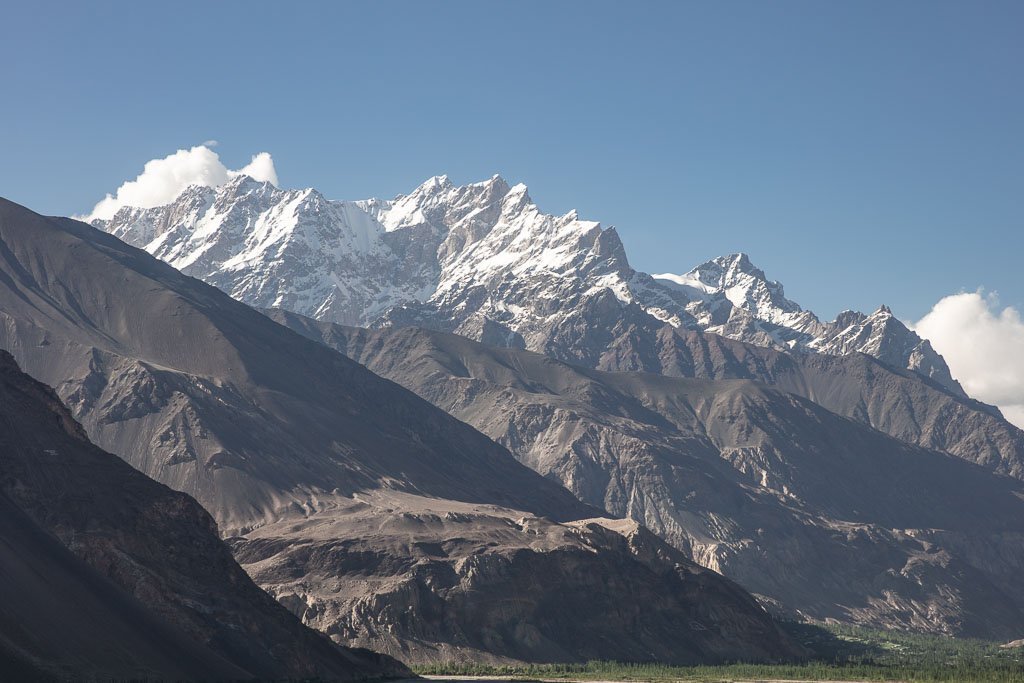
Shandur Pass: Shandur Pass is in the far western fringes of Gilgit-Baltistan’s Ghizer District connecting it to Chitral in Khyber-Pakhtunkhwa Province. Shandur Pass is famous as it is home to the Shandur Polo Festival each year held in July. Shandur Polo Festival is the highest polo festival in the world.
Phandar Valley: Located 60 kilometers west of Gupis, Phandar Valley is green, lush and surrounded by mountains. Access to the valley is possible by road from both Gilgit or from Chitral.
Skardu
Skardu: Skardu is the capital of Baltistan District and the jumping off point for adventures into the Karakoram Mountains. Skardu can be reached by road from Gilgit and Islamabad, as well as by daily flights from Islamabad. Nearby things to do in the Skardu Valley include:
- Kharpocho Fort
- Shangril-La Lake
- Sand Dunes along the Indus River
- Sartpara Lake
Shigar Valley: The gateway to K-2, G-I, G-II, G-III, G-IV, Broad Peak and more massive mountains in the Karakorams. Expeditions and basecamp treks leave from the town of Askole. Reachable by road from Skardu.
Kharmang Valley: Located about 100 kilometers southeast of Skardu by road. Attractions here include:
- Manthokha Waterfall
- Mehdiabad Valley
- Khamosh Waterfall
- Mehdiabad Nala
Khaplu Valley:
The jumping off point for expeditions to Masherbrum Peak, K-7, K-6, Chogolisa and more peaks in the Karakoram. Located about 100 kilometers east of Skardu and accessible by road. There are several lakes to trek to along the Khaplu Valley as well.
Diamer
Joot (Fairy Meadows): A beautiful grassland located near the basecamp for Nanga-Parbat’s Rakhiot Face. From Chilas you will continue along the KKH to the Rakhiot Bridge and drive another 12 kilometers to Tato Village. From Tato trek 5 kilometers to Fairy Meadows.
There are lodges available in Fairy Meadows but you can pitch a tent as well.
Trekking & Mountaineering
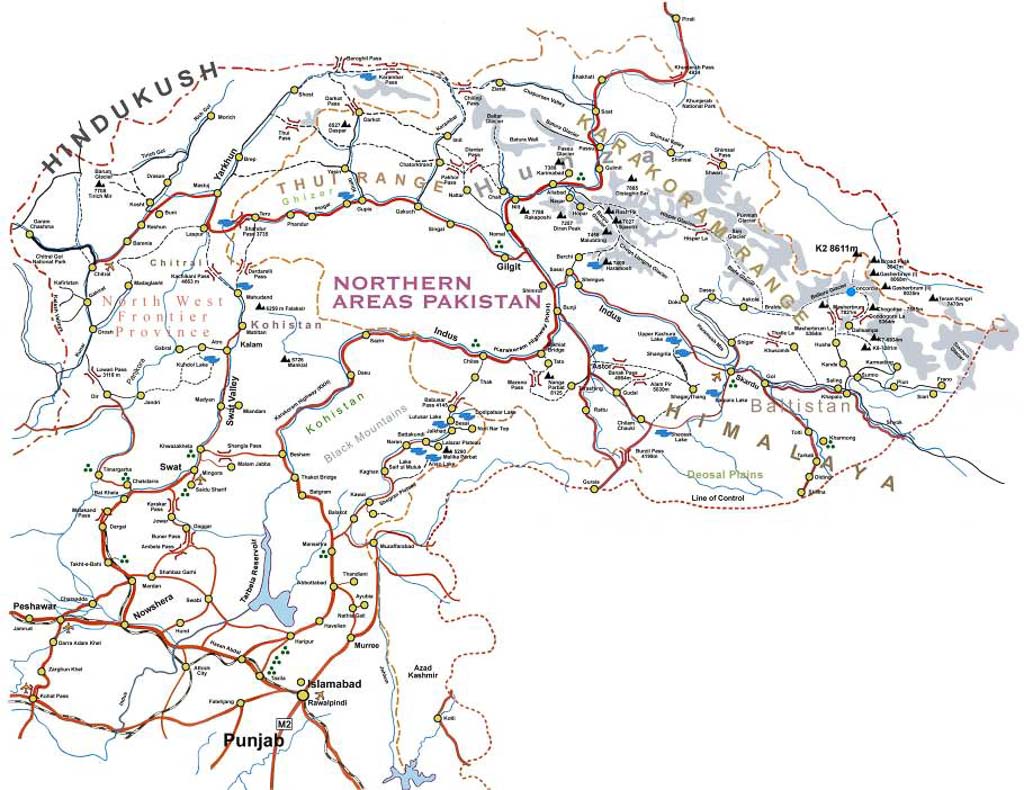
Gilgit-Baltistan is a paradise for trekkers and climbers. Some common treks in the area are:
- Fairy Meadows & Nanga Parbat Basecamp
- K2 Basecamp, Concordia Glacier & Baltoro Glacier
- Rakaposhi Basecamp
- Borith Lake & Passu Glacier
- Hoper Valley
- Malik Pass in Deosai Plains National Park
Festivals
- Yasin Spring Festival: This spring festival in the Yasin Valley is held every year typically between the first and second weeks of March celebrating the start of the new year and upcoming spring.
- Nowruz: Persian New Year. Celebrated on the first day of spring (March 20-22, depending on the year).
- Chilam Joshi: This is a Kalash Spring Festival held in the Kalash valleys of Rumbur, Bumburet, and Birir, in the Chitral District of the neighboring province of Khyber-Pakhtunkhwa. Usually held around May 13-16 each year. The objective of the Kalash Spring Festival is for men and women to find spouses. Colorful dresses and beaded necklaces are worn by the Kalash women.
- Shandur Polo Festival: The highest polo tournament in the world, held at Shandur Pass usually on the second weekend in July. In 2019 it will take place July 8-10.
- Harvest Festival: Dates differ village to village but celebrations fall between June 21 and July 12. Celebrates the beginning of harvest.
- Babusar Polo Festival: A freestyle polo tournament held in the Babusar Pass each year in August. Dates can vary.
- Independence Day: Pakistan’s Independence Day. Held August 14.
- Uchal Festival: Another Kalash Festival held August 20-22 celebrating summer harvest in the Kalash Valleys.
- Gilgit-Baltistan Independence Day: Celebration to mark the end of the Dogra Regime. Held on November 1.
- Chawmos: A Kalash festival held around winter solstice (December 7-22). It’s essentially a wild two week long solstice party of feasts, music, dancing, and more.
- Thumushalling Festival: Celebrating the death of the last Buddhist king of Gilgit. Bonfires and dancing are a part of this celebration held mostly in Hunza, Ishkoman, and Gilgit Valleys on December 21.
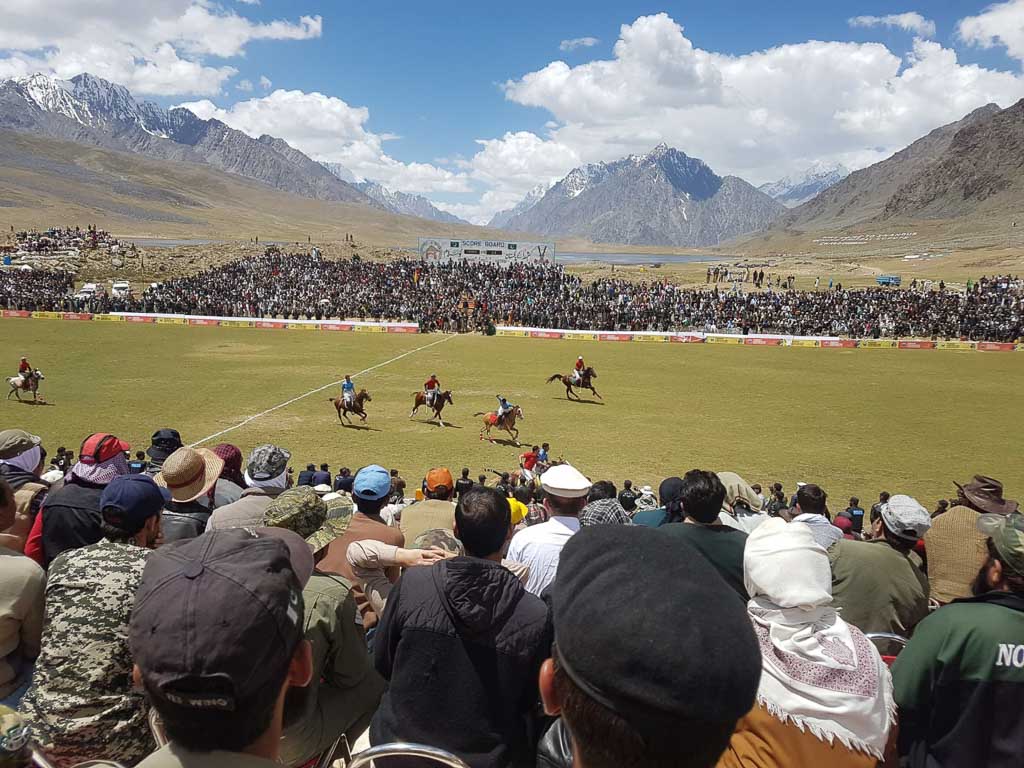
Tour Operators & Guides
As we were a small group of mostly American passport holders we did have to go through a tour agency to get LOIs to apply for visas in order to visit Pakistan the first time I went. Hindukush Karakoram Tours & Treks took care of us and I can personally recommend them. Murad & Ayub are two of the best guides I’ve gotten to meet in all my travels.
Gilgit-Baltistan Travel Budget
Costs can vary widely in Pakistan depending on your travel style, and whether or not you will be required to book a tour in the country. While some may scrape by on less than 1,850 PKR per day, others may have a budget of 18,500 PKR per day or more. Here are some ideas of costs in the region:
- Hotel room: Expect prices to ring in around 3,500-100,000 PKR per night.
- Guesthouse: You can find dirt cheap rooms as little as 800 PKR per night. Most will range around 1,000-3,000 PKR per night. For those looking to really save on accommodation, you can try Couchsurfing.
- Local Transport: Depends on distance, but most transport should cost between 500 and 1,500 PKR between destinations in Gilgit-Baltistan. For longer journeys (Islamabad and beyond) expect prices to be 1,800 to 3,000 PKR.
- Jeep Hire: Expect to pay 6,000-7,000 PKR per day for a jeep and driver.
- Meals: For simple Pakistani meals you can expect to pay 150-200 PKR per meal, more for fancier restaurants.
- National Parks & Historic Sites: 500-800 PKR.
- Guided Tours: Expect most guided tours to cost in the range of $150-200 per day. Of course this typically would include guide, accommodation, meals and transport.
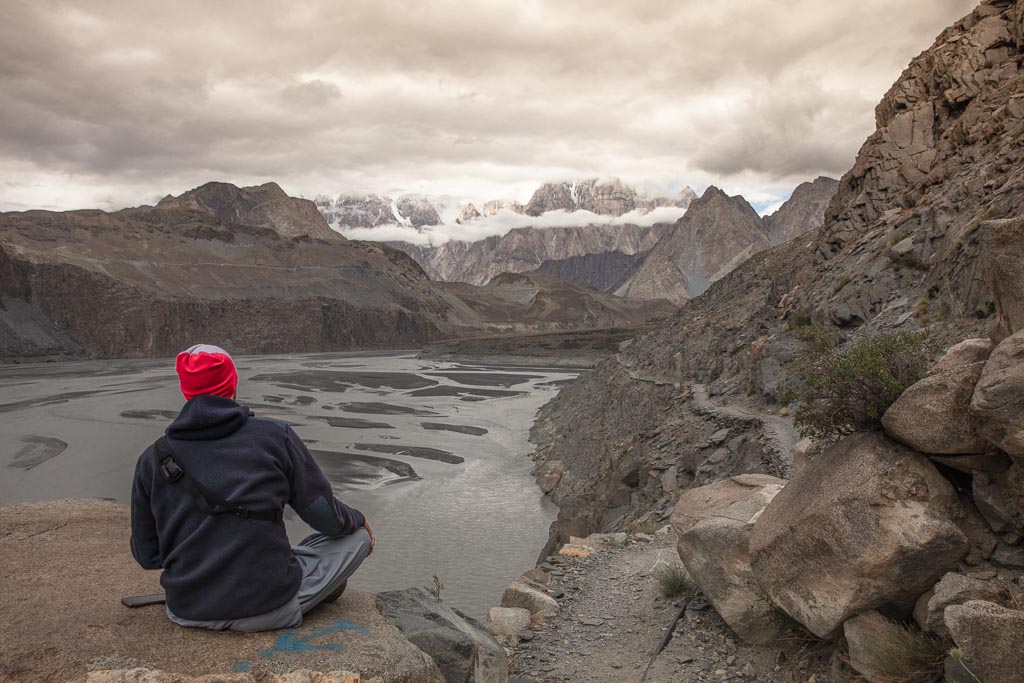
Packing List
- Inreach Explorer+– A GPS and SOS beacon that can send text messages as well. Garmin offers reasonable monthly rates. Great for those planning to trek in remote areas.
- Solar charger– Keep your gadgets charged when camping and trekking.
- External battery pack– Good for keeping gadgets charged on long bus rides and when the electricity cuts out.
- Backpack– I recommend the Osprey Ariel 65L backpack.
- Daypack– My personal favorite is the Osprey Hikelite Plus.
- 3 Season tent– I use the MSR NX Hubba-Hubba solo tent and the Mountainsmith Morrison 2 person tent and love them both!
- Sleeping bag– Useful for trekkers & cyclists. I use a Nemo sleeping bag cold rated to 20ºF/-7ºC.
- Hiking Boots– My personal favorite is the La Sportiva Nucleo GTX hiking boot.
- Lightweight cooking camp set– For trekkers and cyclists that plan to prepare their own meals.
- Water Purifier– I personally use the Katadyn water filter.
- Trekking Poles– Useful for the steep scree slopes and river crossings you may encounter.
- Headlamp– Useful while camping, and for power outages.
- Sunscreen– Many places you’ll visit in Gilgit-Baltistan are at higher altitudes leaving you more susceptible to sunburn.
- Mosquito Repellant– Recommended in the summertime.
- Prescription & over-the-counter medications.
- Toiletries
Guide Books
- Pakistan Traveller– Available in both paperback and digital download.

Online Resources & Handy Apps
- Lost With Purpose: Alex is essentially the queen of solo female travel in Pakistan (I mean, the boys can get pretty much all necessary info from her too).
- Root Network: Led by Alex, Aneeqa, Laila, Sara, and Turfa, the Root Network aims to ensure a sustainable future for the tourism industry of Pakistan.
- The Karakoram Club: Great Facebook group to see photos of the area and meet locals as well as other travelers.
- Backpacking Pakistan: Another good Facebook group. Great resource for Pakistan travel, asking questions, and meeting other travelers.
- Maps.me: Download on your mobile phone. This is an easy to use offline map.
Internet & Mobile
I didn’t come to Gilgit-Baltistan for the internet, and neither should you. Okay, okay, I know sometimes you do need to do important stuff on the internet. Several guesthouses and hotels in towns offer wifi, just be prepared for pretty slow speeds.
For SIM cards the recommended company is Zong, as they have the best coverage in Northern Pakistan- just make sure and have a local sign you up because you’ll pay a lot less.
Health & Safety
- Gilgit-Baltistan is one of the safest parts of Pakistan to visit. Standard precautions are usually enough.
- The most annoying thing you’ll likely encounter is (especially as a woman) are police that decide you need an escort and accompany you to wherever you’re going, even though it’s a perfectly safe place to visit. Of course, if you’re on a tour this won’t be such an issue, but if you’re traveling independently– you’ve been warned. This is probably the most frequent complaint I see from travelers in Pakistan in general.
- Solo female travelers will likely need to a bit more cautious traveling around Pakistan. It is still a very male-dominated society, so you can expect some harassment (though, northern Pakistan seems to be a bit more relaxed about this than other parts of the country). I have spoken with one woman who not once, but twice had men break into her hotel room while she was sleeping in Hunza, presumably to sexually assault her. I’m not trying to scare solo female travelers off, I have many great male and female friends in Pakistan, but these are all things I think you should be aware of.
- Many treks are in remote areas, so do take caution to avoid injury.
- On occasion, there are terroristic attacks that take place in Gilgit-Baltistan (such as the attack on 12 girls’ schools in the Chilas area on August 3, as well as the attack on mountaineers in Fairy Meadows in 2013). They are not the norm in this part of Pakistan but are something to be aware of.
Other Important Notes
- Tourists aren’t allowed near the LOC (line of control) where Gilgit-Baltistan borders Kashmir.
- Sometimes you will find yourself assigned a free police escort armed with an AK-47. Annoying yes- but this isn’t too unusual.
- There are heaps of security checkpoints in Giglit-Baltistan as well as the rest of Pakistan. However, I didn’t find them to be as big a pain in the ass as the ones in Xinjiang, China.
- Bring tons of passport copies and visa copies for above mentioned security checkpoints.

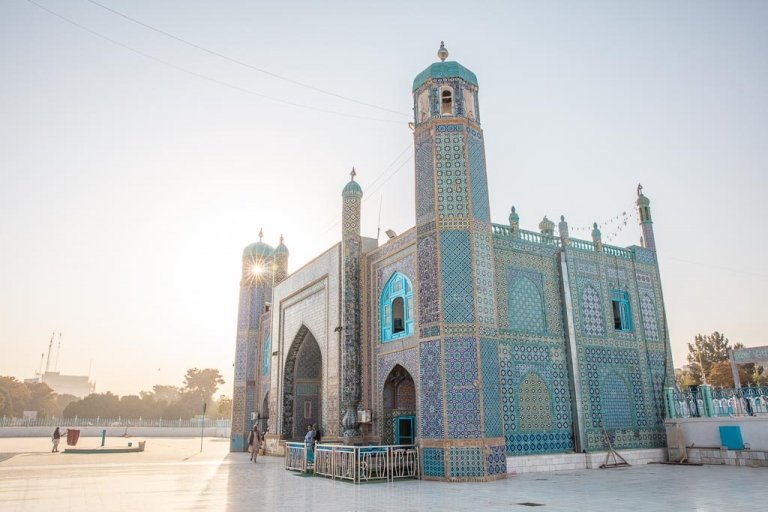
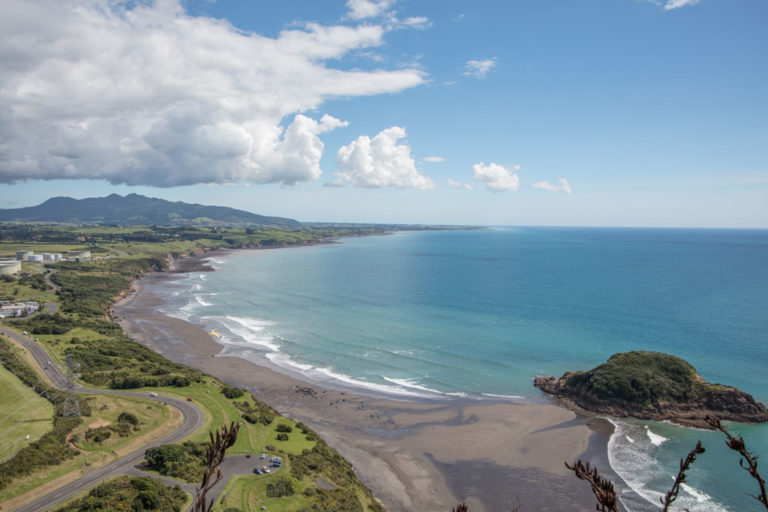
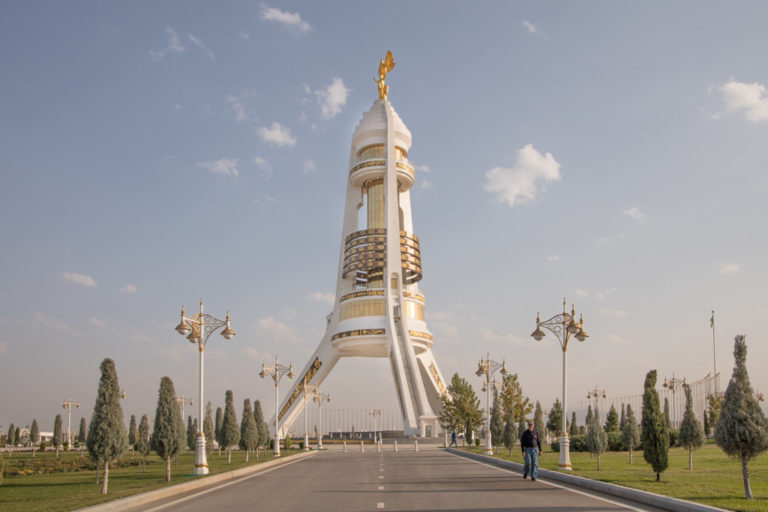


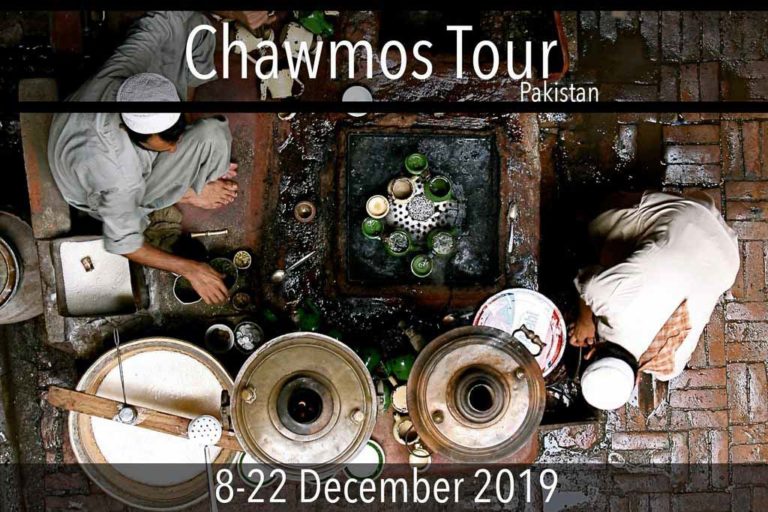
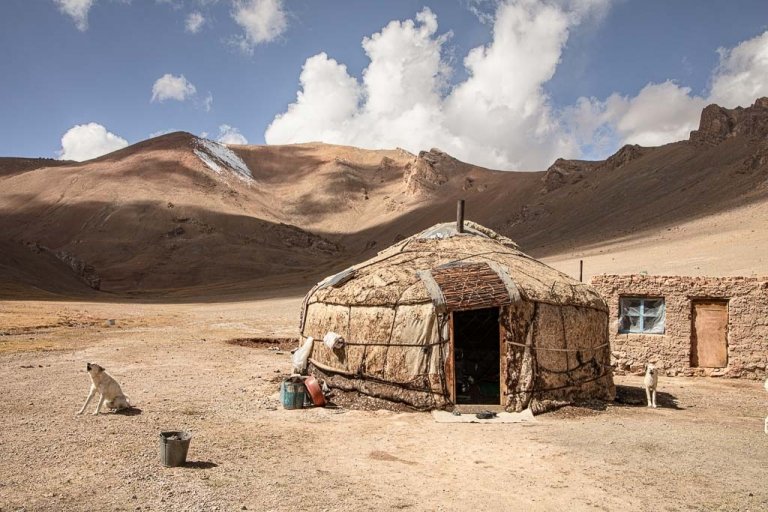
Hi – I really enjoyed reading your article on Gilgit Baltistan and really felling proud at the same moment. I actually belongs to Gilgit Baltistan Pakistan.
So someone coming from any other place and liked your region and wrote on it to show the world, that is something I said priceless.
Once again thank you for showing the real beauty of the GB to the world.
Impressive! Thanks for sharing this.
Good read. Gilgit is really a GEM to visit
Gilgit Baltistan is the crown of Pakistan and the most wanted tourist spot all over the country. Its people are welcoming and pay a lot of respect to the tourists. Thanks for sharing the positive side of Pakistan. I have also written some reasons to visit Pakistan, please read at About Pakistan
I’m not one of those readers that comments on articles often, but yours really compelled me. I hope you continue this. Thanks for sharing the details about Gilgit-Baltistan Travel Guide.
For more details visit us at;https://www.facebook.com/Sufitravellers/
Gilgit-Baltistan is famous for its dramatic mountains especially the snow-capped mountains. GB has unlimited scenery views and is known as heaven on earth. It is one of the beautiful places in Pakistan, delighting and pleasing several tourists, travelers, and adventure lovers. Planning to visit Gilgit-Baltistan? Here are the most enchanting places to visit.
THis Gilgit Baltistan travel guide is impressive.
Tangir and Darel are Most beautiful valleys in Gilgit Baltistan
Beautiful pictures of Pakistan, I must say
You guys should try the off-beaten track in Pakistan like this Mukshpuri Top Hike in Winters
https://www.how2havefun.com/travel/mukshpuri-track/
What do you think?
Gilgit Baltistan is indeed a heaven on earth
I couldn’t agree more!
nice article, thanks for sharing. keep it up
Thank you!!
Hi, great guide- I suspect you are going to be instrumental in my next trip. I used so much of your advice when I went to Tajikistan and Kyrgyzstan this year. Thanks so much
Gill
Hey Gill,
Glad it helped you in TJ & KG, I hope you had an amazing time! Where to next year (I’m guessing PK is on the list ?)? I’ll be getting more guides on UZ and AFG out hopefully in the next couple months.